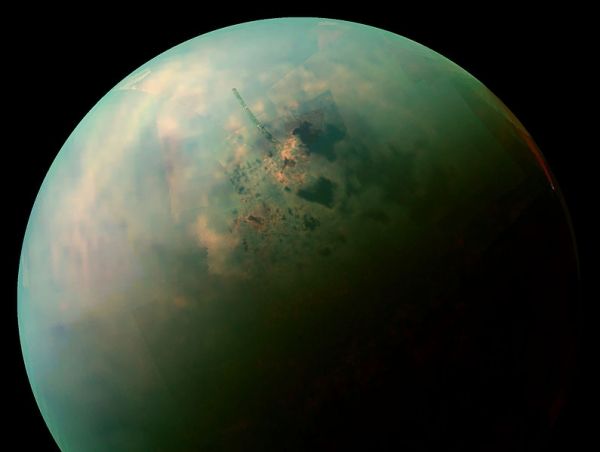The topography of Titan, the largest of moon of Saturn, seems serene in Cassini mission images, but lakes of liquid methane that pock the landscape were likely formed by explosive, pressurized nitrogen just under the moon’s crusty surface, according to research published Sept. 9 in Nature Geoscience.
“Titan has a very distinctive topography. Its lakes show different kinds of shapes and in some cases sharp ridges,” said paper co-author Jonathan Lunine, the David C. Duncan Professor in the Physical Sciences and chair of the Department of Astronomy.
An international group of scientists, led by Giuseppe Mitri of Italy’s d’Annunzio University, examined lakes on Titan’s surface that featured steep, cratered sharp edges, raised rims and ramparts. Some of the steep ridges tower far above the moon’s natural liquid sea level.
“You either need gas that ignites explosively or a gas that builds up enough pressure so that it just pops like a cork from a champagne bottle. On Titan, there is nothing that will create a fiery explosion because that moon has no free oxygen,” said Lunine. “Thus, a pressurized explosion model, we argue, is a better model for those kinds of lakes. Craters are created and they fill with liquid methane.”
Read more at Cornell University
Photo credit: NASA / JPL-Caltech / Space Science Institute via Wikimedia Commons


